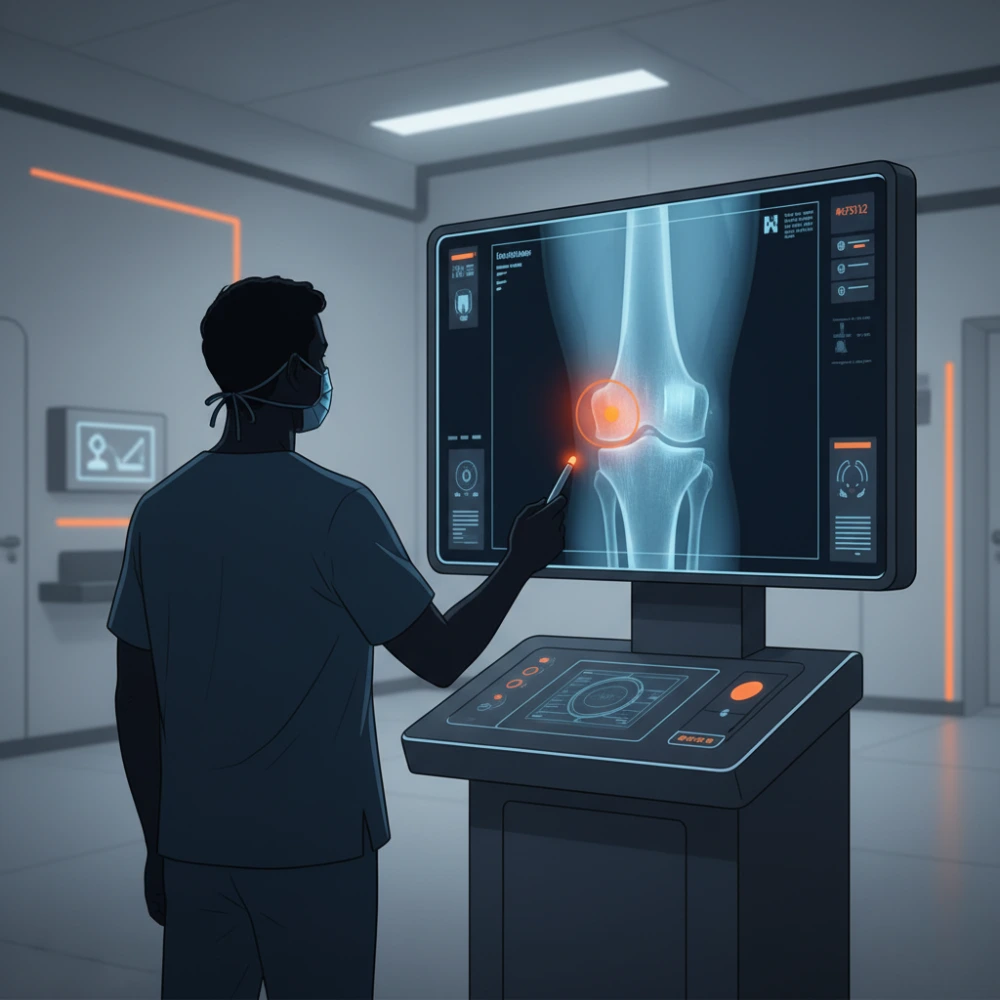
Knee X-Ray – Quick, Safe, and Accurate
A Knee X-Ray is one of the most commonly performed diagnostic imaging tests to assess the bones and joint space of the knee. It helps doctors identify fractures, arthritis, infections, and other causes of knee pain. At Akshar Imaging Centre, we use advanced digital radiography for clear, precise, and quick results.
What is a Knee X-Ray?
A Knee X-Ray uses a small dose of radiation to capture 2D images of the knee joint, including:
- Bones – femur, tibia, fibula, and patella
- Joint spaces – to check for arthritis or cartilage loss
- Bone alignment – to detect dislocations or deformities
- Calcifications or abnormal growths
Why is a Knee X-Ray Performed?
- Detect fractures or bone injuries
- Diagnose arthritis or osteoporosis
- Assess joint pain, swelling, or stiffness
- Identify infections, tumors, or cysts
- Monitor healing after surgery or knee replacement
- Evaluate sports or accidental injuries
Preparation for a Knee X-Ray
- No special preparation is required.
- You may be asked to change into a gown.
- Remove any metal objects like jewelry or belts.
- Inform the technologist if you are pregnant or suspect pregnancy.
The Procedure
- The technologist positions your knee in different angles—usually standing, lying, or bending.
- The X-ray machine captures images within seconds.
- You may be asked to hold still to avoid blurry images.
- The entire procedure takes about 5–10 minutes and is painless.
Benefits vs. Risks
Benefits:
- Quick, non-invasive, and painless
- Helps detect fractures, arthritis, and joint abnormalities
- Minimal radiation exposure with digital X-ray
Risks:
- Very low radiation dose (well within medical safety limits)
- Not suitable during pregnancy unless essential
Why Choose Akshar Imaging Centre
- Modern digital X-ray equipment for sharp images
- Minimal waiting time with same-day reports
- Highly experienced radiologists
- Comfortable and patient-focused care
Frequently Asked Questions (FAQs)
1. How long does a Knee X-Ray take?
👉 Around 5–10 minutes.
2. Is it painful?
👉 No, it’s completely painless.
3. What if my X-Ray is normal but I still have pain?
👉 Your doctor may recommend further imaging, such as an MRI or CT scan, for detailed evaluation.
